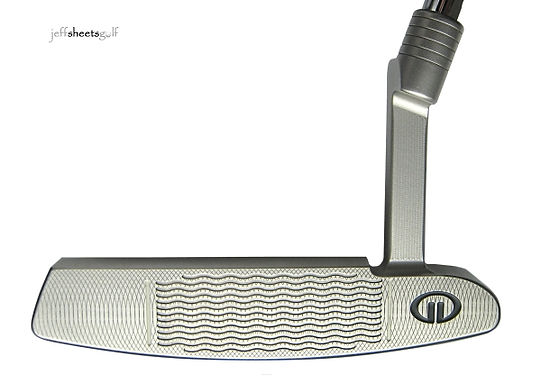CNC Machining
There are an unlimited number of reasons to CNC machine a part for golf equipment. From interchangeable hosel systems and their face angle adapters to specialty weights and components for adjustability the needs to CNC mill different parts are endless. However the king if milled golf components is the putter head. No other club in the bag has undergone as much machining as the putter.

CNC machines vary in size and sophistication. A basic milling machine can be programmed on three different plane axis. 4-Axis and 5-Axis machines can mill more complex shapes without having to re-fixture the material in the machine.

A typical machine shop will have multiple units running constantly. The machine operators ensure all parts are fixtured into the machines correctly and all programming code is loaded into the CPUs.

The more sophisticated the milling machine the more end mills that can be loaded to work with the CAM program. Here is a CNC machine that is currently loaded with 11 different end mill sizes to cut the part.


A CAD program is sent to the CNC machine's CPU where the milling paths are configured and the amount of machining time is determined. The raw material must be perfectly fixtured into the machine for the part to be milled accurately to shape.

The cutting bit, known as the end mill, will follow the programmed paths where it removes material based on the CAM (computer aided manufacturing) file. The end mill will spin at RPMs determined best for the material it is cutting, the size and type of end mill. Cooling oil is sprayed onto the material being cut to prolong the life of the end mill, divert cuttings away from the path and generally keep the parts from over heating from the end mill friction.

When a putter is deemed to be 100% CNC milled consumers often think it is from a block of metal as pictured above. However this is not always the case. A putter milled from block is the most expensive and time consuming method of milling a putter.

Milling a putter from block requires an intensive amount of time to remove the sacrificial material to accommodate the hosel. The putter above was removed from the milling machine before all of the material was milled off. The amount of time and number of end mill passes to remove the material above the face and toe-ward more than doubles the amount of time that the part is in the CNC machine. With time being money most manufacturers will not completely mill a head from block if there is a hosel as part of the design. Instead they will mill the head from a smaller piece of block and then weld a hosel into place dramatically reducing the amount of milling time and wear on the machine.

It is common to produce a 100% CNC milled putter from a billet forged part. An oversize design of the final putter is produced and tooling dies are created so that the shape can be forged into what you see pictured above. This oversized raw forging is then fixtured into the CNC machine and the cutting paths remove material from 100% of the structure's surface. This is truly a 100% CNC milled putter but it is not from block. This method is more economical from a manufacturing stand point but the quantities must be high enough to warrant the billet forged tooling costs. An oversize investment cast putter can also be used for this method however cast parts often have porosity in them leading to the risk that there could be voids in the surface.


Above a putters that have been billet forged to near net shape. These parts get skim milled. With skim milling there is only a small amount of material removed from the putter's surface minimizing milling time and thereby keeping costs lower. This is no less of a quality part however there is little room for design alteration since so little material is being removed. On the oversize forgings (above left) there is ample material that one forging could produce a couple of different model variations (i.e., thinner versus thicker topline, slightly different offset, different edge radii, etc.).
The end result of a CNC milled putter should be a sophisticated part that is reproduced with exact design precision from part to part. Some manufacturers prefer to leave the milling marks on the putter's surface while others will selectively bead blast portions to reduce or eliminate the milling patterns.
Hand Milled Putters


The epitome of a milled putter is a hand milled product. This is different from a CNC milling process because the designer controls the milling movements of the machine by hand. It is not done by a computer program. Pictured here is a Bridgeport milling machine that can be set up to a CPU for CNC milling but incorporates hand levers for manual control. Hand milled putters often do not have the prominent milling marks that you'll find on CNC milled putters. And unlike CNC milled putters which can be perfectly duplicated hand milled models can have slight differences on similar models. One reason for a hand milled is to hit very specific design features that an individual golfer may want to see in the model. And individual's taste can be applied to a putter design which wouldn't be available from a mass produced CNC milled product.


